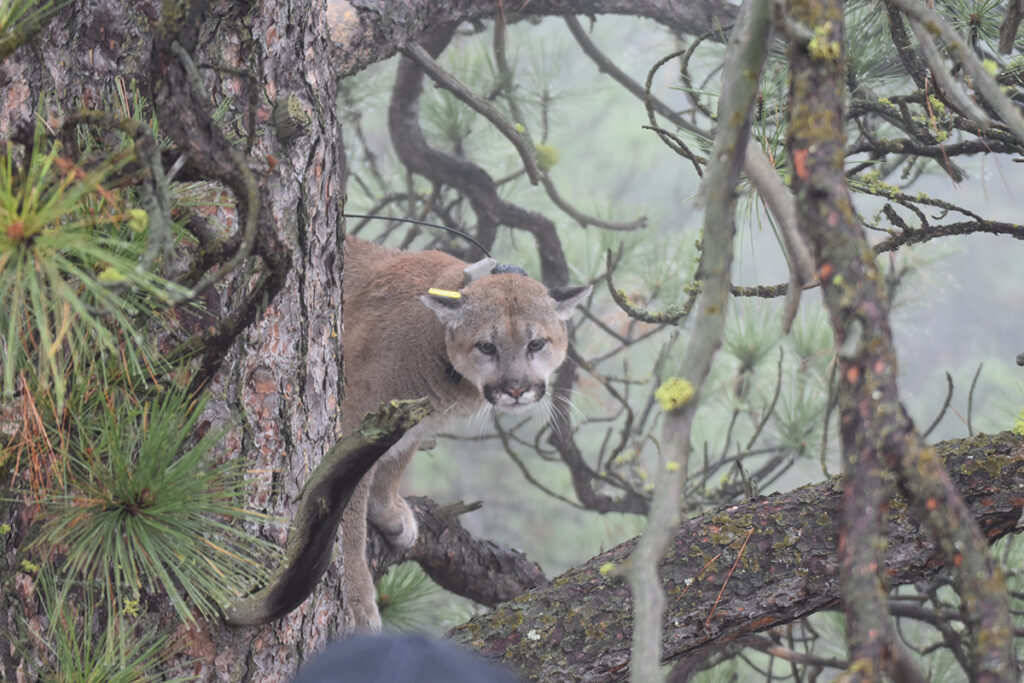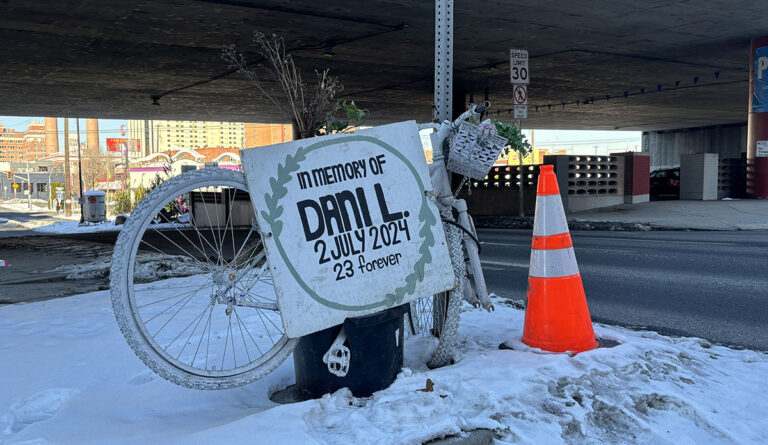It was a chilly, wet November morning when I met Bart George, lead wildlife biologist for the Kalispel Tribe, and his team to track a cougar not too far from my home in West Central. This particular tomcat had gained infamy in 2023 by stalking a mountain biker in Riverside State Park and became a prime candidate for George’s study.
Over the last three years, George has been conducting a study to see if negative stimuli can change the habits of cougars that are too comfortable around people and livestock. George started this research after a frustrating year where he was asked by WDFW to help with the lethal removal of over 60 problem cougars. These cats had been hanging around people’s farms, sometimes for weeks before depredation occurred. George got to thinking that maybe they could be preemptive with these cats. Instead of waiting for them to kill a pet or livestock, maybe he could change their behavior.
The Riverside tomcat had gone through the control period of the study, where—after the cat was fitted with a GPS collar— George would approach it with a podcast playing from the speaker, mimicking the sounds of outdoor voices. He would record how close he could get before the cat would flush (leave its hiding place) and how much energy it would exert.
This morning was the second of four times George would haze the cougar, the second part of the study. As we approached the tomcat, George switched on a speaker and watched his GPS unit. The cat started to move as we approached, but found a thicket of shrubs to hunker down in. We were able to get within 20 meters of the cat. Its cover was so thick, I was just able to make out its tawny fur and black-tipped tail as it silently slinked out its hiding place and took off to the north.

We watched the handheld GPS unit to see it travel several hundred yards before it stopped again. At this point, George radioed his crew to release the five hound dogs that had been eagerly waiting back at the road. These dogs act as the harassment part of the study, adding a negative reinforcement to the sound of people.
The hounds come tearing through the brush toward us. As soon as they get the scent of the cougar, the morning stillness is over, and they go barking and baying on the trail. It is not long before the GPS unit shows the cougar and hounds are stopped at the same location. The cougar has been treed.
We find the cat in a lone ponderosa pine near the top of a basalt hill. The cat has only gone 20 feet up, which gives us a great view, especially when we are on top of the hill near eye level. The cougar definitely does not look happy, pacing on the branches and hissing, but that is in part the goal of the study.
In the two times they have handled this cougar, George has found porcupine quills in its belly and has tried to remove as many as possible. There is no shortage of prey in Riverside State Park and cougars are one of the few animals that will actively hunt porcupines. Cougars and other large carnivores play a key role in ecosystems, balancing prey populations and dispersing smaller carnivores and herbivores across the landscape—both of which help reduce disease outbreak and improve habitat function. Cougars will also maintain their range from competition from other large predators, and it is probably better if a hazed cat who is weary of people chooses to share our trail system.
George acknowledges that there are probably cougars anywhere that they can find prey and shelter in Eastern Washington, but cougar interactions with humans are still extremely rare. If approached by a cougar, it is important to not run. Instead, try to make yourself look as big as possible by raising a coat or backpack over your head, and yell and throw things—basically, try to intimidate the cat.
George will be compiling the data from his study this spring, but his preliminary findings are that the cougars that go through this study flush sooner and flee faster, changing their behavior to discourage interaction with humans. He is hopeful that this process of harassment can prevent cats from getting into situations where lethal removal is necessary. //
Adam Gebauer works in regional conservation. He’ll be looking for tracks while he’s making his own tracks on snowy adventures this winter.
Cover photo courtesy Adam Gebauer













